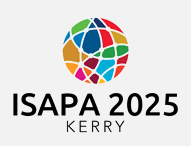Start Date
19-6-2025 10:30 AM
End Date
19-6-2025 12:00 PM
Abstract
Introduction Social impairments are core symptoms of Autism Spectrum Disorder (ASD). Individuals with ASD also often experience motor abnormalities and low levels of physical activity, making them encounter many challenges and hindering their overall development. This study aimed to investigate the effectiveness of a three-week intensive and structured motor intervention designed to improve motor behaviors and foster social development in children with ASD.
Methodology The study involved 18 children with ASD (9.58±2.76 years, 15 boys, 3 girls). Participants took part in daily 90-minute sessions over 15 days. The intervention focused on rhythmic dance, as well as experiencing and learning introductory skills for various sports. Children’s Physical Activity Questionnaire (C-PAQ), Emotional Regulation and Social Skills Questionnaire (ERSSQ), and Test of Gross Motor Development-3rd Edition (TGMD-3) were used to assess changes in physical activity, motor skills, and emotional regulation and social skills before and after the intervention.
Results Significant improvements were observed in minutes spent in Moderate-to-Vigorous Physical Activity (MVPA) per week (t=-2.735, p=0.016), emotional regulation and social skills (t=-2.454, p=0.028), and fundamental motor skills (t=-2.422, p=0.032), especially locomotor skills (t=-2.369, p=0.035).
Conclusions These findings suggested that motor interventions can provide a valuable approach to supporting the developmental needs of children with ASD, particularly in enhancing motor behaviors and promoting social development. Future research should further investigate the long-term impacts of such interventions. Additionally, incorporating family and peer involvement could enhance the effectiveness of these programs, offering a more comprehensive support system within home, school, and community contexts.
Recommended Citation
Lu, Yuemei; Zong, Chenjun; Zhang, Zichao; Li, Zhihui; and Wang, Xiaozan, "Move and Thrive: Effectiveness of a Structured Motor Intervention on Motor Behaviors and Social Development in Children with Autism Spectrum Disorder" (2025). International Symposium of Adapted Physical Activity and International Symposium on Physical Activity and Visual Impairment and Deafblindness. 24.
https://sword.cit.ie/isapa/2025/day4/24
Move and Thrive: Effectiveness of a Structured Motor Intervention on Motor Behaviors and Social Development in Children with Autism Spectrum Disorder
Introduction Social impairments are core symptoms of Autism Spectrum Disorder (ASD). Individuals with ASD also often experience motor abnormalities and low levels of physical activity, making them encounter many challenges and hindering their overall development. This study aimed to investigate the effectiveness of a three-week intensive and structured motor intervention designed to improve motor behaviors and foster social development in children with ASD.
Methodology The study involved 18 children with ASD (9.58±2.76 years, 15 boys, 3 girls). Participants took part in daily 90-minute sessions over 15 days. The intervention focused on rhythmic dance, as well as experiencing and learning introductory skills for various sports. Children’s Physical Activity Questionnaire (C-PAQ), Emotional Regulation and Social Skills Questionnaire (ERSSQ), and Test of Gross Motor Development-3rd Edition (TGMD-3) were used to assess changes in physical activity, motor skills, and emotional regulation and social skills before and after the intervention.
Results Significant improvements were observed in minutes spent in Moderate-to-Vigorous Physical Activity (MVPA) per week (t=-2.735, p=0.016), emotional regulation and social skills (t=-2.454, p=0.028), and fundamental motor skills (t=-2.422, p=0.032), especially locomotor skills (t=-2.369, p=0.035).
Conclusions These findings suggested that motor interventions can provide a valuable approach to supporting the developmental needs of children with ASD, particularly in enhancing motor behaviors and promoting social development. Future research should further investigate the long-term impacts of such interventions. Additionally, incorporating family and peer involvement could enhance the effectiveness of these programs, offering a more comprehensive support system within home, school, and community contexts.


